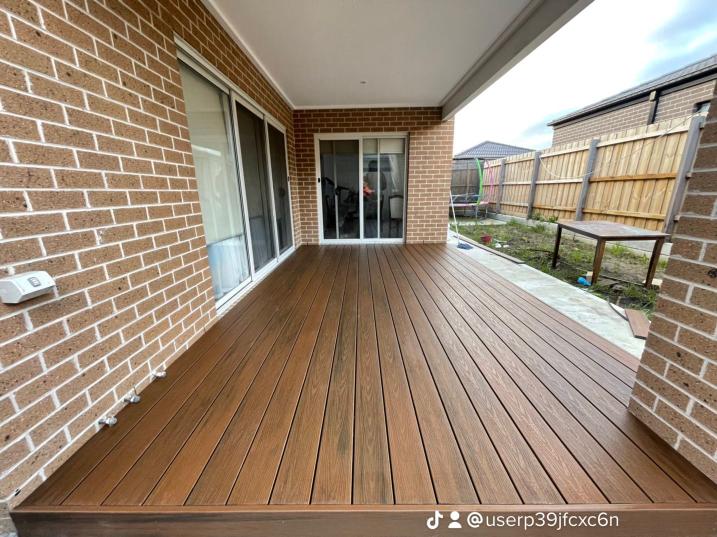
Creating a functional and aesthetically pleasing outdoor space is a priority for many homeowners in Victoria, Australia. Given the region’s varied terrain, many properties feature slopes that require the use of retaining walls to manage soil erosion and create levelled areas. A common question that arises is whether a deck can be connected to a retaining wall. The answer is yes, but it requires careful planning, engineering considerations, and compliance with local building codes to ensure safety and longevity. Hire an experienced landscaping expert who provides apt decking installation in Mount Martha.
Integrating a deck with a retaining wall can provide several advantages. Firstly, it allows homeowners to maximise their outdoor space, especially on sloped properties. By using a retaining wall as part of the deck’s structure, you can create a seamless transition between different levels of your landscape, making the area more accessible and functional.
Another benefit is improved property value. A well-designed deck and retaining wall combination enhances curb appeal and makes the outdoor area more usable. Whether for entertaining guests, relaxing, or gardening, this type of construction adds both aesthetic and practical value.
Additionally, integrating the two structures can lead to better space utilisation. Instead of having separate elements that might look disjointed, the retaining wall can serve multiple purposes, such as providing support, seating, or even incorporating garden beds. This kind of integration creates a cohesive landscape design, which is especially beneficial for smaller properties where space is limited. Act with a retaining wall contractor in Mount Martha to find the best solutions.
When connecting a deck to a retaining wall, structural stability is paramount. The wall must be able to bear additional loads without compromising its integrity. In Victoria, Australia, building codes require retaining walls over a certain height (usually 1 meter) to be engineered for stability. If a deck is to be attached, further engineering analysis is necessary to ensure the wall can handle both lateral soil pressure and the additional weight of the deck.
In most cases, free-standing retaining walls made from stone or interlocking blocks are not designed to bear the load of a deck. However, if the wall is a reinforced concrete structure, it may be possible to use it as a partial foundation for the deck. Engineers will need to assess whether additional supports, such as footings or anchor points, are required to ensure stability. Therefore, it compels to hire a professional who can provide flawless decking installation in Mount Martha.
Additionally, the movement of soil behind the retaining wall should be considered. Expanding and contracting soils due to moisture changes can put pressure on the wall, which, in turn, can affect the deck’s stability. Proper construction techniques, including the use of geogrids and reinforced footings, help mitigate these issues.

When constructing a deck near or on a retaining wall, the placement of footings is crucial. Deck footings should be positioned in a way that they do not compromise the integrity of the retaining wall. If footings are placed too close, they could disturb the soil behind the wall, leading to settlement or structural failure.
To prevent these issues, it is recommended to place deck footings at a safe distance from the retaining wall. If space is limited, helical piers or deep-set concrete footings may be required to distribute the load more effectively. These footings ensure the deck remains stable without putting excessive pressure on the wall.
Another important consideration is soil drainage around the footings. Poor drainage can lead to erosion, weakening both the retaining wall and the deck supports. Proper site preparation, including compacting the soil and using gravel bases, can help maintain stability over time.
Attaching a deck to a retaining wall requires a careful selection of connection methods. If the wall is made of reinforced concrete, it may be possible to bolt a ledger board directly to it, providing a stable attachment point for the deck. However, this must be done with appropriate anchors that can withstand load-bearing forces.
For non-load-bearing walls, such as those made from interlocking blocks or natural stone, it is generally not recommended to attach the deck directly. Instead, the deck should be designed as a freestanding structure with its own support posts and footings. This prevents unnecessary stress on the wall and ensures the deck remains structurally independent.
Bridging techniques can also be used to connect a deck to a retaining wall. For example, a floating deck design can extend slightly over the wall without exerting pressure on it. In this case, a cantilevered deck or a reinforced beam system can create the desired connection while maintaining stability. Consult your ideas with an expert providing professional decking installation in Mount Martha.
One of the most important aspects of integrating a deck with a retaining wall is ensuring proper drainage. Water accumulation behind a retaining wall can lead to hydrostatic pressure, which may cause the wall to fail over time. Similarly, poor drainage around deck footings can lead to soil erosion and instability.
To address these concerns, a well-designed drainage system should be implemented. Retaining walls should include weep holes or drainage pipes to allow excess water to escape. Additionally, gravel backfill and a proper grading system can help direct water away from both the wall and the deck footings.
For decks constructed over a retaining wall, ensuring that water does not pool around the attachment points is critical. Flashing and waterproof membranes can be used to protect the connection points from moisture damage. In Victoria, where heavy rainfall can occur during certain seasons, these precautions are especially important to prevent long-term deterioration. Share your ideas with a retaining wall contractor in Mount Martha.
Conclusion
Connecting a deck with a retaining wall is certainly possible, but it requires careful planning, and proper engineering. Decking installation in Mount Martha should adhere to best construction practices. The benefits of such integration include improved space utilization, enhanced aesthetics, and increased property value. However, attention must be given to structural stability, footings, attachment methods, drainage, and overall design.
For homeowners in Victoria, Australia, where the climate and terrain vary widely, working with an experienced retaining wall contractor in Mount Martha is highly recommended. With the right approach, a well-integrated deck and retaining wall can create a functional, durable, and visually striking outdoor living area that enhances both lifestyle and property appeal.
New Look Landscaping and Service precisely love to work among greens and make the surrounding special with artistic features. We are specialised in design concepts, constructions and management for multiple outdoor spaces around Victoria.
